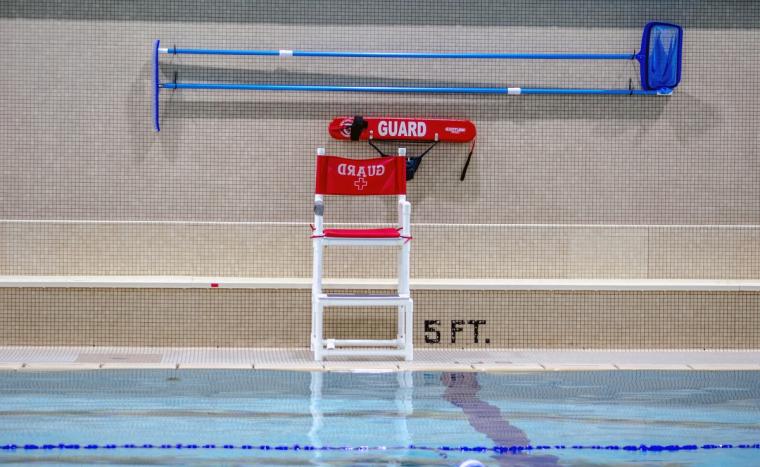
A nationwide lack of lifeguards that began in 2021 in the wake of the coronavirus pandemic now is stretching into its third summer.
“Across the country, states and municipalities are facing their worst shortages on record,” CBS News reported earlier this month. “Across the country, about half of the nation’s 309,000 public pools will be forced to close their doors or reduce hours, according to the American Lifeguard Association.”
And that’s only for pools; it does not include beaches and water parks.
As Bernard J. Fisher II, director of health and safety at the association, told Axios: COVID “wiped the slate of certified lifeguards completely clean.”
He’s referring to the fact that when pools shut down in 2020 because of the pandemic, many lifeguard training sessions and certification courses (parts of which must be held in person) were put on hold, too. This led to a dearth of qualified applicants in 2021 that, as things turn out, has not yet been reversed.
Complicating matters is this: The visas of thousands of Eastern Europeans who worked as lifeguards in the United States were paused during COVID. Although it has been lifted, “the pipeline hasn’t caught up yet,” according to KARE11.com.
Municipalities are doing everything they can to attract more lifeguards, but that’s not always enough. Plenty of other employment options — ones requiring a lot less responsibility for more pay — are available elsewhere.
“There are so many opportunities. Anything that a 17-, 18-, 20-year-old wants to do, they can do it — because the jobs are available,” Tom Gill, vice president of the United States Lifesaving Association, told CNN.com referring to the ever-shrinking base of lifeguards. “That pool of people — pun intended — is just smaller. You’ve got to work really hard to recruit, and when you get them there, to pay them well, train them well and treat them well.”
 Officials in California have cut hours in half at Los Angeles County’s 25 seasonal swimming pools by staggering operating days and hours to spread staffing around multiple facilities. In New York City, Parks Department officials as of mid-June had only about one-third of the lifeguards required to fully staff beaches and pools — despite pay increases, retention bonuses and easing what The New York Times called “the notoriously difficult swim test.”
Officials in California have cut hours in half at Los Angeles County’s 25 seasonal swimming pools by staggering operating days and hours to spread staffing around multiple facilities. In New York City, Parks Department officials as of mid-June had only about one-third of the lifeguards required to fully staff beaches and pools — despite pay increases, retention bonuses and easing what The New York Times called “the notoriously difficult swim test.”
Organizations in other cities have taken similar approaches. In Minnesota, the YMCA of the Greater Twin Cities is giving prospective lifeguards a $1,000 sign-on bonus and a starting wage of $17.50 per hour; Philadelphia officials took things a step further by offering free swimming lessons to would-be guards who are unable to swim; and other communities are reaching out to retirees and nontraditional workers to fill lifeguarding positions.
The waters at Scarborough Beach State Park in Maine are now are patrolled by a pair of K-9 lifeguards in addition to humans. Newfoundland puppies are trained to follow a lifeguard into the water and then pull in the guard and victim, according to KTUL.com, which refers to what are currently considered the only two ocean guard dogs in the United States as “second responders.”
A statewide effort in Colorado, initiated by the Department of Local Affairs and the Department of Labor and Employment and dubbed the Lifeguard Training Initiative, covers “all eligible expenses” when it comes to hiring lifeguards, including the cost of lifeguard certification or recertification, as well as certification or recertification training.
“We want every public pool to be open and expand operating hours this summer,” Colorado Gov. Jared Polis said in a statement announcing the initiative. “We are thrilled to be able to announce the Lifeguard Training Initiative and to help keep pools open and safely staffed.”
“Things are a little bit better than they were [in previous years],” Kevin Roth, vice president for research, evaluation and technology at the National Recreation and Park Association, told KFF Health News, a national newsroom covering health issues. “The open times may still be compressed, but there were communities that didn’t open half their pools last year, and we’re not hearing that this year.”
KFF Health News notes that as municipal leaders decide which pools should receive top priority, “many are doing so with a clear intention that they be accessible to poor or minority kids as well as those in less diverse or wealthier neighborhoods.”
Baltimore, for example, opened 12 of its 23 free pools this year based on careful analysis. “We picked our pools so that it will be equitable and there would be locations on bus lines so that everyone will have access,” said Nikki Cobbs, chief of aquatics at the Baltimore City Department of Recreation and Parks.
According to the Centers for Disease Control and Prevention, drowning death rates for Black people are 1.5 times higher than the rates for white people. Disparities are highest among Black children ages 5 to 9 (rates 2.6 times higher) and ages 10 to 14 (rates 3.6 times higher).
In swimming pools, Black children ages 10 to 14 years drown at rates 7.6 times higher than white children, and black children are more likely to drown in public pools; white children are more likely to drown in residential pools.

